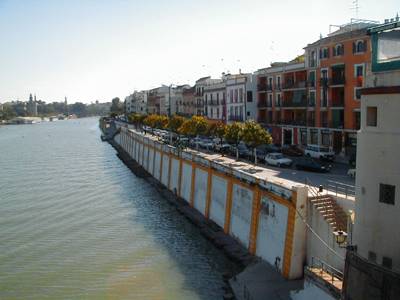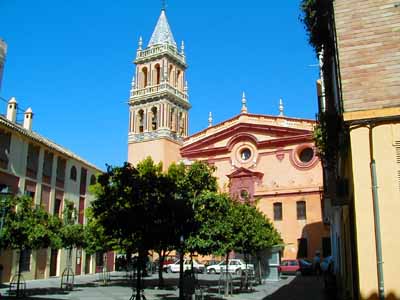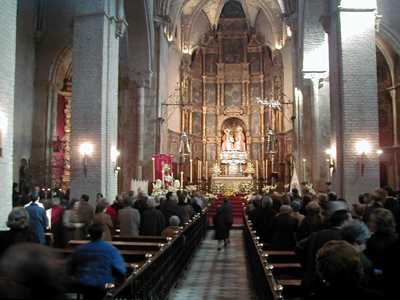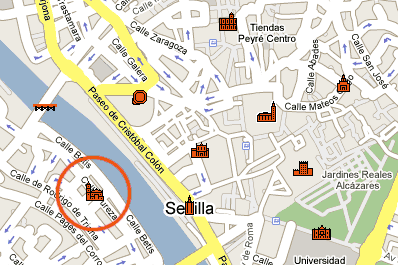
View from Triana bridge on calle Betis
Today, Triana is a very popular quarter for tourists. The streets of San Jacinto, Pureza, Castilla and Betis form the essential parts to visit. Betis street still preserves the mooring quay and a long line of façades from the 18th century. Here you will also find some fine bars and restaurants.

Santa Ana church
Triana's Santa Ana church is the oldest parish church in Seville, dating back to the 13th century. Alfonso X ordered the beginning of the construction works in 1276. They were finished in the beginning of the 14th century. It is in cisterciense-gothic style atlthough the construction material brick gives a mudéjar touch. Santa Ana church suffered various reforms, the most important one after the earthquake of Lisbon in 1755.
The building has been renovated recently to give back its original appearance.

Interior
The Interior of Santa Ana offers important artwork:
- the retablo mayor and several sculptures from Nufro de Ortega and Nicolás de Jurate from around 1540,
- paintings of the retablo mayor from Pedro de Campaña,
- the Stmo. Cristo del Socorro (christ) by Andrés de Ocampo from 1620,
- the lauda sepulcral from D. Iñigo López in 1503 (the legend says that it assures marriage to women by giving it seven taps with the feet).
Location
In the Triana neighborhood, a few blocks behind the Calle Betis.
See the monument on interactive map
Betis street allows an excellent view of the Torre del Oro, the Giralda, the Maestranza Theatre and the Maestranza Bullring.
| Main Page | Apartments | Hotels | Hostels | Activities | Monuments | Sevilla Info | City Map |